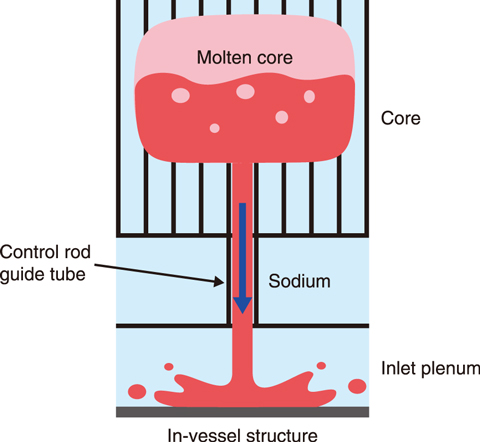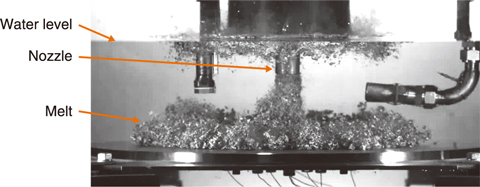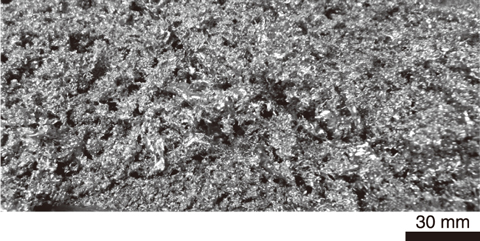
Fig.7-5 Discharge of molten cores below reactor cores

Fig.7-6 Melt dispersion in the simulated experiment

Fig.7-7 State of sediment after the experiment
During a core-disruptive accident, the molten core of a sodium-cooled fast reactor (SFR) can discharge into the inlet plenums and impinge on in-vessel structures (Fig.7-5). Due to the high temperature of molten cores, the coolant may boil, affecting the sedimentation states of the molten cores on in-vessel structures. Since sedimentation states affect the coolability of molten cores on inlet plenums, a coolability evaluation is crucial to show that molten cores can be retained within reactor vessels. As such, the effects of coolant boiling on the behavior of molten cores that impinge on in-vessel structures must be clarified.
Therefore, a molten core discharge was experimentally simulated using water and alloy with a low melting point (78 ℃). Molten alloy (melt) was discharged through a nozzle (inner diameter: 28 mm) into a shallow water pool, and the melt jet impinged on the plate in the pool. The initial temperatures of the melt and water were 350 ℃ and 30 ℃, respectively, to simulate an SFR accident in which stable vapor film is not formed at the interfaces between molten cores and coolant due to the high heat transfer ability of sodium.
The melt was dispersed along the plate after the impingement on the plate (Fig.7-6), and then solidified with rapid fragmentation and cooling, i.e., the melt changed to form a rough, complex surface, or break into tiny pieces (Fig.7-7). Since this phenomenon was not seen in comparative experiments without coolant boiling, the coolant boiling caused the fragmentation. When the melt was enlarged along the plate by impingement, the contact surface area between the melt and water was also enlarged. Thus, the fragmentation and cooling by the generation of numerous tiny vapor bubbles would be greatly enhanced by the melt expansion.
This work on the molten core discharge in SFRs clarified the impingement of the melt jet on the plate with rapid fragmentation and cooling. As a result, molten cores were revealed to deposit in inlet plenums with rapid fragmentation and cooling. This suggests capability of effective cooling of molten cores in the inlet plenums.